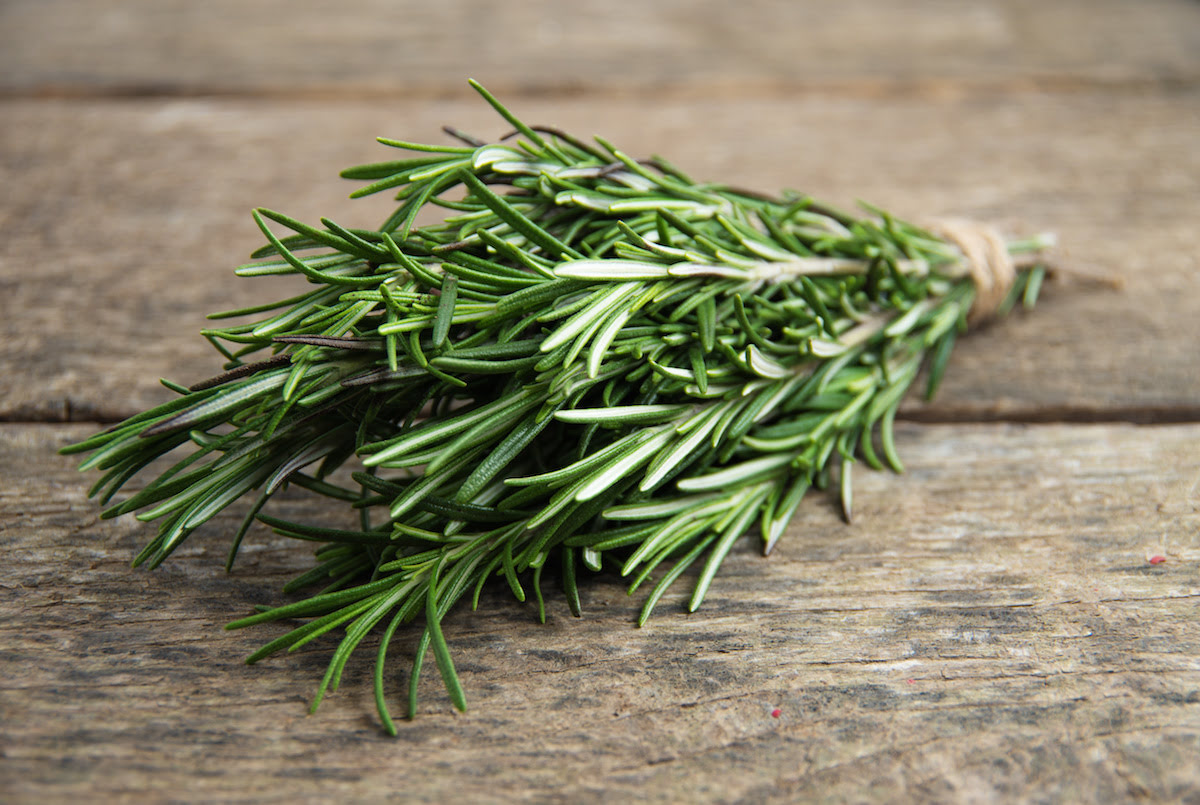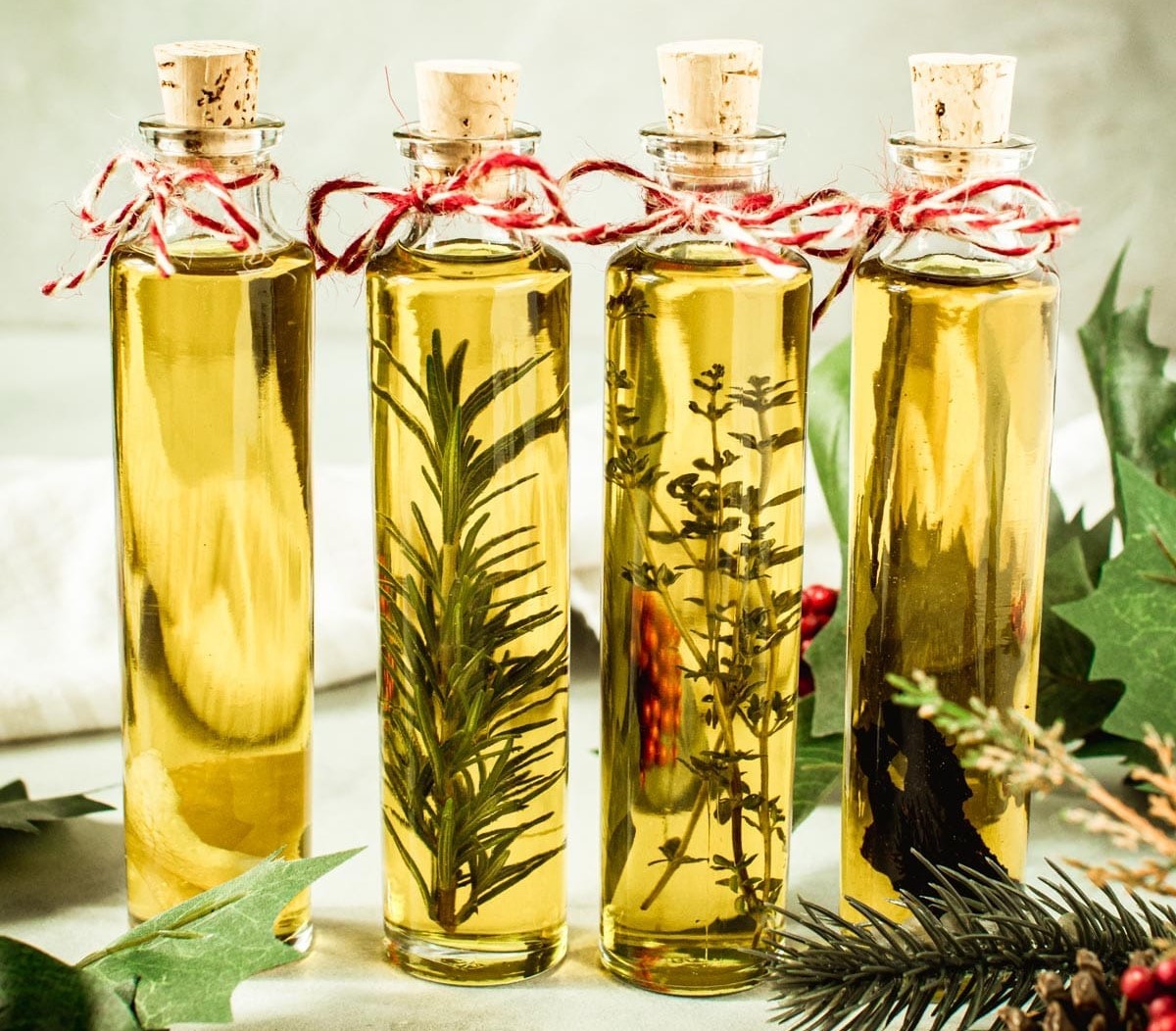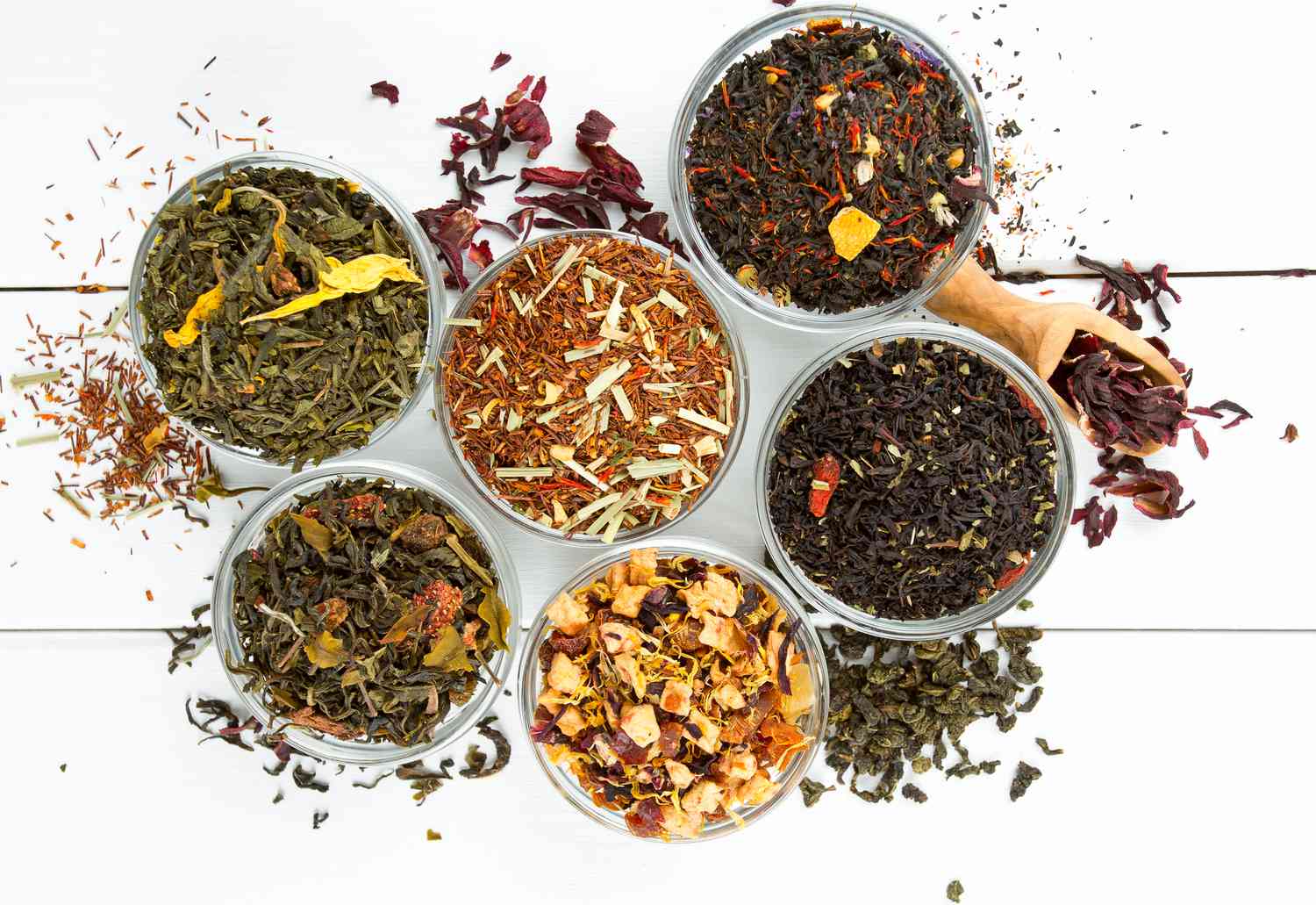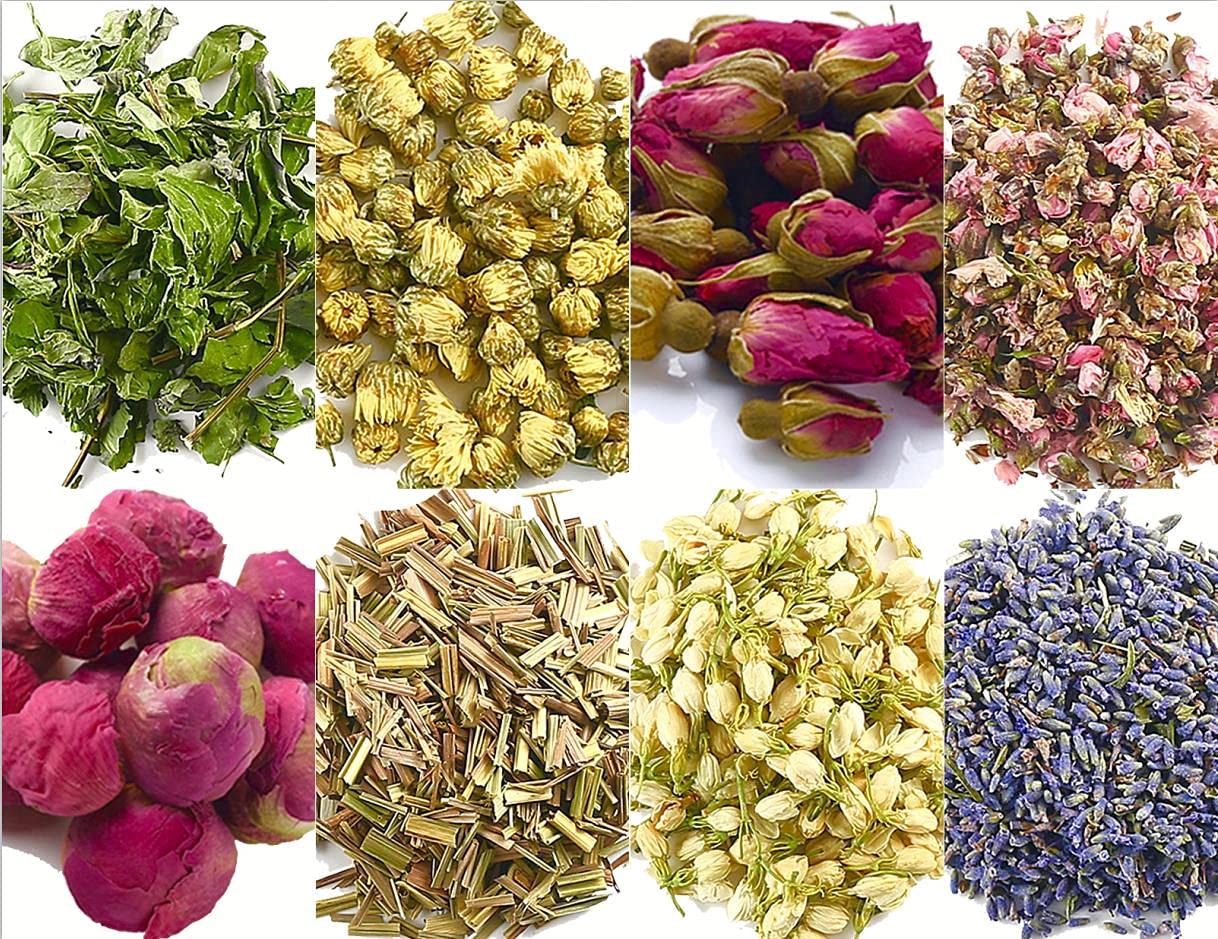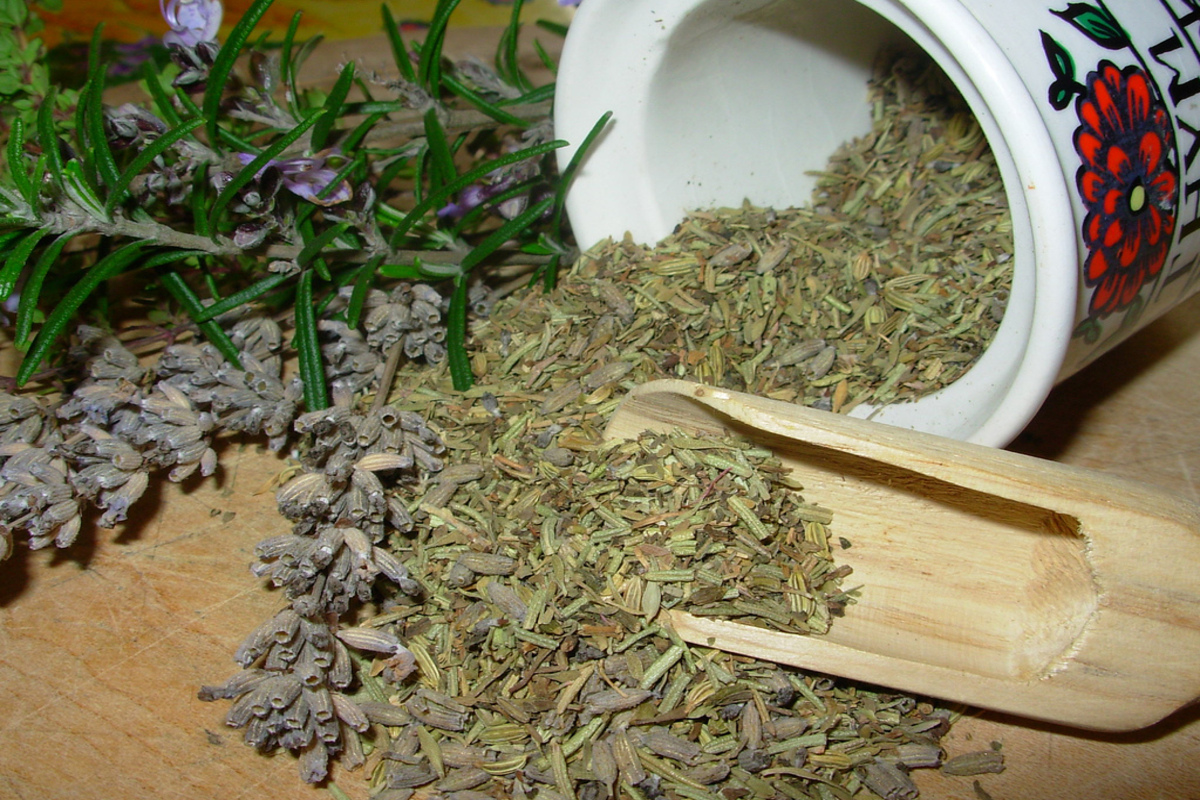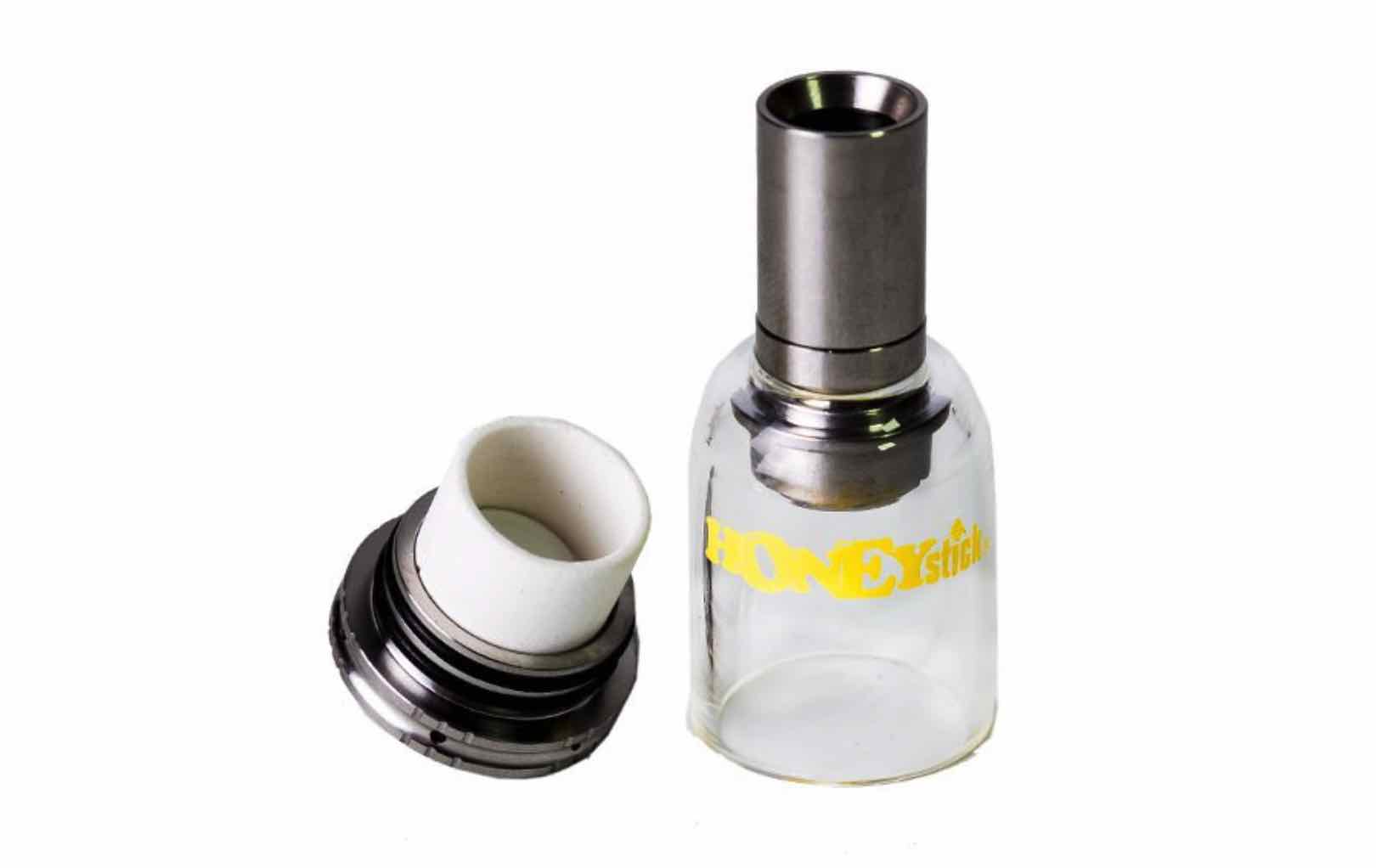Home>Gardening News and Trends>Latest News>How To Use Dried Herbs
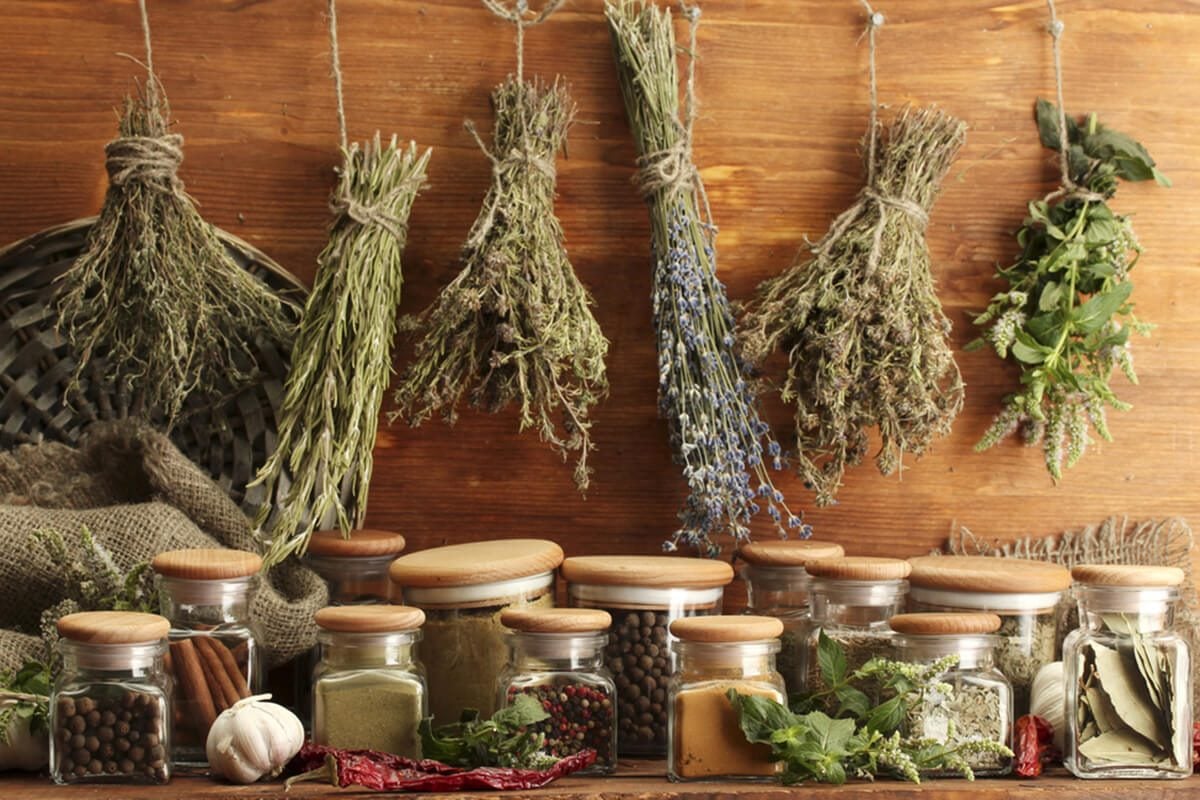

Latest News
How To Use Dried Herbs
Modified: January 22, 2024
Discover the latest news on how to use dried herbs, from essential techniques to creative recipes. Enhance your cooking with these expert tips!
(Many of the links in this article redirect to a specific reviewed product. Your purchase of these products through affiliate links helps to generate commission for Chicagolandgardening.com, at no extra cost. Learn more)
Table of Contents
Introduction
Welcome to the world of dried herbs! Whether you’re an experienced chef or a novice cook, incorporating dried herbs into your culinary creations can elevate the flavors and aromas of your dishes. Dried herbs are a convenient and versatile ingredient that can be used in a variety of recipes, from savory soups and stews to aromatic teas and infused oils.
Using dried herbs offers several benefits, including prolonged shelf life, concentrated flavors, and ease of use. The process of drying herbs involves removing the moisture from fresh herbs, thereby preserving their taste and aroma. This allows you to enjoy the rich flavors of herbs throughout the year, even when they are out of season.
Proper storage of dried herbs is crucial to maintain their quality and potency. When stored correctly, dried herbs can retain their flavors and medicinal properties for up to a year or more. We will explore the best methods for storing dried herbs to ensure they remain fresh and flavorful.
If you have ever wondered how to rehydrate dried herbs or how to substitute them for fresh herbs in a recipe, we’ve got you covered. We will discuss the proper techniques for rehydrating dried herbs, as well as provide tips on how to substitute dried herbs for fresh herbs in your favorite dishes.
Do you want to try your hand at making homemade dried herbs? We will guide you through the process, from harvesting and drying your own herbs to storing them properly for future use.
Whether you’re using dried herbs in cooking, herbal teas, or infused oils, there are endless possibilities to explore. We will offer creative ideas and recipes to help you unleash the full potential of dried herbs in your culinary endeavors. Get ready to add a burst of flavor to your dishes!
Benefits of Using Dried Herbs
Using dried herbs in your cooking offers a multitude of benefits that can enhance the flavor, aroma, and convenience of your culinary creations. Here are some of the key advantages of incorporating dried herbs into your recipes:
- Prolonged Shelf Life: One of the major benefits of using dried herbs is their extended shelf life. Unlike fresh herbs that have a short lifespan, dried herbs can be stored for a longer period without losing their potency. This allows you to always have a variety of herbs on hand, ready to be used whenever you need them.
- Concentrated Flavors: Drying herbs intensifies their flavors, as the process removes the moisture and concentrates the essential oils present in the herbs. This means that a small amount of dried herbs can pack a powerful punch in terms of taste. The concentrated flavors of dried herbs can add depth and complexity to your dishes.
- Convenience: Using dried herbs provides a convenient way to incorporate the flavors of various herbs into your recipes. Unlike fresh herbs that require washing, chopping, and measuring, dried herbs are ready to use straight from the container. This saves you time and effort in meal preparation.
- Availability Year-Round: Dried herbs are available year-round, regardless of the herb’s specific season. This means that you can enjoy the flavors and aromas of your favorite herbs even when they are out of season or not readily available. Having a stash of dried herbs in your pantry ensures that you always have access to the herbs you love.
- Medicinal Properties: Many herbs are known for their medicinal properties, and drying them can help preserve these beneficial qualities. Whether you’re using herbs for digestive support, relaxation, or immune-boosting properties, dried herbs can provide a convenient way to incorporate these natural remedies into your daily routine.
By using dried herbs in your cooking, you can unlock a world of flavor and convenience that will enhance your culinary creations. Whether you’re seasoning a savory dish, brewing a delicious herbal tea, or infusing oils, dried herbs offer a versatile and potent ingredient that can elevate your cooking to the next level.
Proper Storage of Dried Herbs
Proper storage is essential to maintain the quality and potency of dried herbs. When stored correctly, dried herbs can retain their flavors, aromas, and medicinal properties for an extended period of time. Follow these guidelines to ensure your dried herbs remain fresh and flavorful:
- Choose the Right Container: Store your dried herbs in airtight containers such as glass jars or metal tins. Make sure the containers are clean, dry, and free from any residual odors. The airtight seal will prevent moisture and air from degrading the quality of the herbs.
- Keep Away from Light and Heat: Exposure to light and heat can cause herbs to lose their flavors and potency quickly. Store your dried herbs in a cool, dark place away from direct sunlight and heat sources, such as the stove or oven. A pantry or cupboard is an ideal location for storing dried herbs.
- Avoid Moisture: Moisture is the enemy of dried herbs, as it can lead to mold and spoilage. Ensure that the herbs are completely dry before storing them. You may even consider adding a desiccant, such as a silica gel packet, to help absorb any remaining moisture and keep the herbs dry.
- Label and Date: Properly label each container with the name of the herb and the date of drying. This will help you keep track of the herbs and their freshness. Use a permanent marker or adhesive labels to ensure the information stays legible over time.
- Store Whole or Ground: Herbs can be stored either in their whole form or ground. Whole herbs tend to retain their flavors longer than ground herbs. However, if you prefer the convenience of pre-ground herbs, store them in airtight containers to prevent oxidation and loss of flavor.
- Discard Old or Stale Herbs: Over time, dried herbs can lose their potency and flavors. It’s advisable to regularly check your herb collection and discard any herbs that have passed their prime. As a general guideline, most dried herbs are best used within one year of drying.
By following these proper storage practices, you can ensure that your dried herbs remain fresh, flavorful, and ready to use in your culinary endeavors. Incorporating properly stored herbs into your recipes will enhance the taste, aroma, and overall quality of your dishes.
Rehydrating Dried Herbs
Rehydrating dried herbs is a simple process that allows you to regain some of the moisture and freshness that was lost during the drying process. Although dried herbs can be used directly in recipes, rehydrating them can enhance their texture and release their flavors more effectively. Here’s how to rehydrate dried herbs:
- Choose the Right Method: There are different methods you can use to rehydrate dried herbs, depending on your preferences and the specific herb you’re working with. The two most common methods are steeping in hot water and soaking in a liquid such as broth or oil.
- Steeping in Hot Water: This method works well for herbs used in teas, infusions, or recipes that require a shorter cooking time. Simply place the desired amount of dried herbs in a mug or teapot, and pour hot water over them. Let the herbs steep for 5 to 10 minutes, allowing the flavors to infuse into the water. Strain the liquid and use it in your recipe as desired.
- Soaking in Liquid: This method is more suitable for herbs that require longer cooking times or for infusing flavors into oils. Place the dried herbs in a bowl or container, and cover them with a liquid of your choice, such as broth or oil. Let the herbs soak for at least 30 minutes to several hours, depending on the desired intensity of flavor. Strain the liquid and use it in your recipes, keeping in mind that you may need to adjust the amount of liquid called for in the recipe.
- Adjust for Moisture Content: Rehydrating dried herbs can add moisture to your recipe, so it’s important to adjust the overall moisture content accordingly. If you’re rehydrating herbs for a soup or stew, you may need to reduce other liquid ingredients to compensate for the moisture from the rehydrated herbs. Similarly, if you’re using rehydrated herbs in a dry rub or seasoning blend, you may need to reduce other dry ingredients to maintain the desired balance of flavors.
- Experiment and Taste: Rehydrating dried herbs is not an exact science, and the amount of liquid and soaking time may vary depending on individual preferences and the specific herb being used. It’s always a good idea to taste and adjust as you go. Start with small amounts of liquid or shorter soaking times, and gradually increase until you achieve the desired texture and flavor.
By rehydrating your dried herbs, you can bring them back to life and unleash their vibrant flavors in your recipes. Whether you’re making a cup of herbal tea or adding a burst of flavor to your dishes, the process of rehydration can elevate your culinary creations to new heights.
Measuring Dried Herbs
Measuring dried herbs accurately in your recipes is crucial to achieve the desired flavor profile. Unlike fresh herbs, dried herbs have a more concentrated flavor, so it’s essential to use the correct amount to avoid overpowering or underwhelming your dishes. Here are some tips for measuring dried herbs:
- Use a Measuring Spoon: A set of measuring spoons is a convenient tool for measuring dried herbs. Use a teaspoon or tablespoon to scoop the desired amount of herbs, leveling off the spoon with the back of a knife for more accurate measurements.
- Crush to Release Flavors: Before measuring dried herbs, consider lightly crushing or rubbing them between your fingers. This will help release their essential oils and intensify their flavors. Be sure to crush only the amount you need for immediate use to preserve the rest of the dried herbs’ freshness.
- Follow the Recipe: When cooking a recipe that calls for dried herbs, it’s best to follow the recommended measurements provided. Recipes have been tested and balanced to ensure the flavors are well-balanced, so deviating too much from the prescribed amounts may alter the overall taste and outcome of the dish.
- Adjust to Taste: While it’s important to adhere to a recipe’s measurements, taste is subjective. If you prefer a stronger herbal flavor, you can add a bit more dried herbs to suit your taste. Conversely, if you prefer a milder flavor, use less than the suggested amount. However, exercise caution and make adjustments gradually to avoid overwhelming the dish with too much seasoning.
- Consider Herb Varieties: Different herbs have varying levels of potency and flavor intensity. For instance, dried herbs like oregano and thyme tend to have a stronger flavor, so you may need to use less compared to herbs like parsley or basil. Familiarize yourself with the specific characteristics of the herbs you’re using to achieve the desired balance in your recipes.
- Keep Track of Measurements: It’s a good habit to note down the measurements of herbs you use in your recipes, especially if you like to experiment and make adjustments. This record will serve as a reference for future cooking and help you recreate successful flavor combinations.
By measuring dried herbs accurately, you can ensure that their flavors are properly incorporated into your recipes. Finding the right balance of herbs will elevate the taste of your dishes and allow you to fully enjoy the aromatic and flavorful qualities of dried herbs.
Substituting Dried Herbs for Fresh Herbs in Recipes
When a recipe calls for fresh herbs but you don’t have them on hand, you can easily substitute dried herbs to achieve similar flavors and aromas. While fresh herbs offer a more vibrant taste, dried herbs can provide a convenient alternative. Here’s how to substitute dried herbs for fresh herbs in your recipes:
- Conversion Ratio: As a general rule of thumb, you can use one-third to one-half of the amount of dried herbs when substituting for fresh herbs. For example, if a recipe calls for 1 tablespoon of fresh basil, you can use 1 teaspoon of dried basil instead. This is because dried herbs are more concentrated in flavor.
- Time Consideration: Keep in mind that dried herbs need time to release their flavors. Unlike fresh herbs that are added towards the end of cooking, dried herbs are typically added earlier to allow them to infuse their flavors throughout the dish. Add dried herbs at the beginning of cooking or follow the recipe instructions for optimal flavor development.
- Crushing Dried Herbs: To enhance the potency of dried herbs, consider lightly crushing them before adding them to your recipe. This will help release their essential oils and intensify their flavors. Crushing the herbs between your fingers or using a mortar and pestle should suffice.
- Consider Texture: It’s important to note that dried herbs have a different texture compared to fresh herbs. While fresh herbs provide a vibrant and tender texture, dried herbs can be more crumbly. If texture is important to your recipe, consider adding dried herbs earlier in the cooking process to rehydrate and soften them.
- Adjust to Taste: As with any substitution, taste is subjective. Start with the recommended conversion ratio and adjust according to your preference. If you desire a stronger herbal flavor, you can add a bit more dried herbs. Conversely, if you prefer a milder flavor, use less than the suggested amount. Experiment and find the right balance to suit your taste.
- Consider Herb Varieties: Different herbs have varying levels of flavor intensity even in their dried form. Take into account the specific herb you’re substituting and its potency. For example, dried herbs like rosemary and thyme tend to have a stronger flavor, so you may need to use less compared to dried herbs like parsley or cilantro.
By substituting dried herbs for fresh herbs, you can still enjoy the flavors and aromas that herbs bring to your recipes. While fresh herbs offer a vibrant and delicate taste, dried herbs allow for convenience and year-round access to herb flavors. Experiment with different combinations and find the perfect balance to elevate your culinary creations.
Preparing Homemade Dried Herbs
Creating your own homemade dried herbs allows you to have full control over the quality, freshness, and flavors of the herbs you use in your cooking. The process of drying herbs is relatively simple and can be done with little effort. Here’s how to prepare your own dried herbs:
- Harvesting: Begin by harvesting your herbs when they are at their peak. Choose herbs that are healthy, vibrant, and free from pests or diseases. It’s best to harvest your herbs in the morning after the dew has evaporated but before the sun is too hot, as this is when the herbs are at their most flavorful.
- Cleaning: Once you have harvested your herbs, gently rinse them under cool water to remove any dirt or debris. Shake off any excess water and pat them dry with a clean towel or allow them to air dry for a short period.
- Bundling: Gather small bunches of herbs together, making sure to remove any discolored or damaged leaves. Tie the herbs together at the base using a kitchen twine or a rubber band. Make sure the bundles are loose enough to allow for airflow.
- Hanging: Find a well-ventilated area with low humidity to hang your herb bundles. Choose a space away from direct sunlight, as exposure to prolonged sunlight can cause the herbs to lose their flavors. You can hang the bundles from a drying rack or use a clothesline and clips to suspend them upside down.
- Drying Time: The drying time for herbs can vary depending on the herb variety and the environmental conditions. It can take anywhere from a few days to a couple of weeks for the herbs to completely dry. The herbs are ready when the leaves are crisp, brittle, and easily crumble when touched.
- Storing: Once your herbs are fully dried, remove the leaves from the stems and store them in airtight containers. You can use glass jars, metal tins, or resealable bags for storage. Be sure to label each container with the name of the herb and the date of drying to keep track of the freshness.
- Proper Storage: Store your homemade dried herbs in a cool, dark place away from moisture and heat sources. Following the proper storage guidelines we discussed earlier will help maintain the quality and flavors of your homemade dried herbs for an extended period.
Preparing your own dried herbs not only ensures their freshness but also allows you to customize the flavors to your preferences. With a bit of time and effort, you can enjoy the satisfaction of using herbs that you nurtured and preserved yourself in your culinary creations.
Using Dried Herbs in Cooking
Dried herbs are a versatile ingredient that can add depth, complexity, and flavor to a wide range of dishes. Whether you’re cooking a savory soup, a hearty stew, or a flavorful marinade, dried herbs can be your secret weapon in the kitchen. Here are some tips on using dried herbs in your cooking:
- Kick-Start the Cooking Process: Add dried herbs to your dish early on in the cooking process to allow their flavors to infuse and develop. The heat and moisture will help rehydrate and release the aromatic oils in the herbs, enhancing the overall taste of the dish.
- Consider Different Herbs: Experiment with a variety of dried herbs to explore different flavor profiles. Common herbs like rosemary, thyme, oregano, and basil are excellent choices for adding depth to savory dishes, while mint and lavender can lend a unique aroma to desserts or beverages.
- Combine Complementary Flavors: Mix different dried herbs together to create unique flavor combinations. For example, a blend of dried basil, oregano, and thyme works well in Mediterranean-inspired dishes, while a combination of dried parsley, sage, and rosemary adds a delightful earthiness to roasted meats.
- Adjusting the Quantity: As dried herbs have a more concentrated flavor compared to fresh herbs, you may need to adjust the quantity accordingly. Start with a smaller amount and gradually add more to achieve the desired taste. Remember to taste-test as you go to avoid overpowering the dish with too much seasoning.
- Infuse Flavors in Sauces and Dressings: Adding dried herbs to sauces, dressings, and vinaigrettes is an excellent way to incorporate their flavors. Stir in a pinch of dried herbs like thyme or dill into a creamy sauce, or sprinkle some dried parsley or basil into a tangy dressing for an extra layer of taste.
- Enhance Rice and Grain Dishes: Infuse dried herbs into rice, quinoa, or couscous to elevate their flavors. Simply sprinkle your preferred dried herbs, such as turmeric, cumin, or dried cilantro, into the cooking water before adding the grains. The herbs will infuse their flavors, transforming a plain side dish into an aromatic delight.
- Make Flavorful Rubs and Seasonings: Create custom rubs and seasonings by combining dried herbs with other spices, salt, and pepper. Mix together dried thyme, paprika, garlic powder, and onion powder for a savory poultry rub, or blend dried rosemary, sage, and pepper for a fragrant herb crust for roasted lamb.
- Balance the Flavors: As with any seasoning, it’s essential to strike a balance of flavors in your dishes. Dried herbs provide depth and complexity, but they should not overpower the other ingredients. Experiment with different combinations and adjust the amount of dried herbs to achieve a harmonious flavor profile.
By using dried herbs in your cooking, you can elevate the taste of your dishes and add a touch of culinary flair. The versatility of dried herbs allows you to experiment with different flavors, creating a delightful sensory experience in every bite.
Using Dried Herbs in Herbal Teas
Dried herbs are a wonderful addition to herbal teas, offering a delightful and aromatic experience. Creating your own herbal teas using dried herbs allows you to customize flavors, explore various combinations, and enjoy the soothing benefits of herbal infusions. Here’s how to use dried herbs in herbal teas:
- Selecting the Right Herbs: Choose dried herbs that are known for their pleasant flavors and medicinal properties. Popular choices for herbal teas include chamomile, peppermint, lavender, rosemary, and lemon balm. Consider the taste and benefits you’re looking for when selecting your herbs.
- Combining Herbs: Experiment with different combinations of dried herbs to create unique flavors. Mix and match herbs to find complementary blends. For example, combining chamomile with lavender can create a calming and soothing tea blend, while a mix of peppermint and lemon balm can result in a refreshing and invigorating infusion.
- Infusion Methods: There are several methods to infuse dried herbs into your tea. The most common method is steeping the herbs in hot water. Place a teaspoon or two of your chosen dried herbs in a tea infuser or directly in a teapot. Pour hot water over the herbs and let it steep for five to ten minutes. Adjust the steeping time based on your preference for strength.
- Enhancing the Flavor: To enhance the flavors and aromas of your herbal tea, you can add natural sweeteners like honey or a squeeze of fresh lemon juice. Experiment with different additions like a cinnamon stick or a slice of ginger to add depth and complexity to your tea blend.
- Consider Medicinal Properties: Dried herbs are not only flavorful but also offer various medicinal properties. Research the potential health benefits of the herbs you’re using and choose combinations that align with your wellness goals. For example, adding dried echinacea or elderberry to your tea can support your immune system.
- Relaxing Blends: Create calming and relaxing tea blends by using dried herbs like chamomile, lavender, or passionflower. These herbs are known for their soothing qualities, making them perfect choices for winding down at the end of a long day or promoting a restful night’s sleep.
- Refreshing Blends: If you’re looking for a refreshing and invigorating tea, try blending dried herbs like peppermint, spearmint, or lemongrass. These herbs offer a cooling sensation and a burst of flavor that can revitalize your senses.
- Herbal Tea Pairings: Consider incorporating dried herbs into traditional tea blends for added complexity. For example, adding a sprinkle of dried rosemary to a black tea blend can offer a unique and aromatic twist.
By using dried herbs in herbal teas, you can create unique and flavorful combinations that cater to your taste preferences and wellness needs. Enjoy the soothing warmth, invigorating refreshment, or calming relaxation that these herbal infusions can provide.
Using Dried Herbs in Infused Oils
Infused oils are a fantastic way to capture the flavors and aromas of dried herbs. They can be used in a variety of culinary applications, from drizzling over salads to adding a burst of flavor to marinades and dressings. Infusing oils with dried herbs is a relatively simple process that yields remarkable results. Here’s how to use dried herbs in infused oils:
- Selecting the Right Herbs: Choose dried herbs that have robust flavors and aromatic qualities. Popular options for infused oils include rosemary, thyme, basil, oregano, and chili flakes. Consider the flavor profile you desire in your infused oil and choose herbs that will complement your culinary creations.
- Choosing the Oil: Select a high-quality oil that will complement the flavors of the herbs and is suitable for use in cooking or as a finishing oil. Extra virgin olive oil is a popular choice due to its mild flavor and versatility. However, you can also experiment with other oils such as sunflower, grapeseed, or avocado, depending on your preference.
- Preparing the Herbs: Ensure that the dried herbs are clean, free from any moisture, and properly dried. You can gently crush the herbs to release their essential oils and enhance their flavors. This step is optional, but it can help for a more intense infusion.
- Infusion Methods: There are several methods to infusing oils with dried herbs. One popular method is the cold infusion method. Simply place your dried herbs in a clean, airtight jar and cover them with the oil. Make sure the herbs are fully submerged in the oil. Seal the jar and let it sit in a cool, dark place for one to two weeks, shaking the jar occasionally to mix the herbs and oil. Another option is the heat infusion method, where you gently heat the oil and herbs over low heat for a short period and then allow it to cool and infuse.
- Straining the Oil: Once the desired level of infusing has been reached, strain the infused oil to remove the herb particles. Use a fine-mesh strainer or cheesecloth to ensure a smooth and clean final product. Transfer the strained oil to a clean and airtight container for storage.
- Storing the Infused Oil: Store your infused oil in a cool, dark place, away from direct sunlight or heat sources. Proper storage will help maintain the flavors and quality of the oil. It’s also a good idea to label the container with the name of the infused oil and the date it was made.
- Utilizing Infused Oils: Use your homemade infused oils in various ways. Drizzle them over salads, roasted vegetables, or grilled meats to add a burst of flavor. They can also be used as a base for marinades, dressings, or dipping sauces. Infused oils can elevate the taste of your culinary creations and offer a touch of sophistication.
- Experiment with Combinations: Don’t be afraid to mix different dried herbs together to create unique flavor combinations in your infused oils. Play with ratios and herb combinations to find the perfect blend that suits your taste preferences.
Using dried herbs in infused oils allows you to infuse your cooking with the flavors and aromas of your favorite herbs. These oils can enhance a variety of dishes and elevate your culinary creations to new heights.
Conclusion
Incorporating dried herbs into your culinary adventures brings a world of flavor, convenience, and creativity to your recipes. Whether you’re using them in cooking, herbal teas, or infused oils, dried herbs can elevate the taste and aroma of your dishes. The benefits of using dried herbs are plentiful – prolonged shelf life, concentrated flavors, and availability year-round. Proper storage techniques ensure the longevity and freshness of dried herbs, allowing you to enjoy their exceptional qualities for an extended period.
Rehydrating dried herbs before use revitalizes their texture and releases their flavors more effectively. Measuring dried herbs accurately in your recipes ensures the desired taste and potency. Substituting dried herbs for fresh herbs allows you to maintain flavors even when fresh herbs are unavailable. Preparing homemade dried herbs gives you control over their quality and customization options.
Dried herbs can be used in various cooking applications, from enhancing the flavors of dishes to being utilized in herbal teas and infused oils. The options for creativity and experimentation are endless, enabling you to craft unique flavor profiles that suit your palate. Whether you’re a seasoned chef or an enthusiastic home cook, incorporating dried herbs into your kitchen repertoire will undoubtedly elevate your culinary creations.
So, don’t hesitate to explore the world of dried herbs and unlock their full potential in your cooking. From the convenience of storing and using them year-round to the joy of creating your own flavors, dried herbs are a versatile and essential ingredient in any kitchen. Let your creativity soar as you experiment, taste, and enjoy the vibrant flavors and aromas that dried herbs bring to your dishes.
